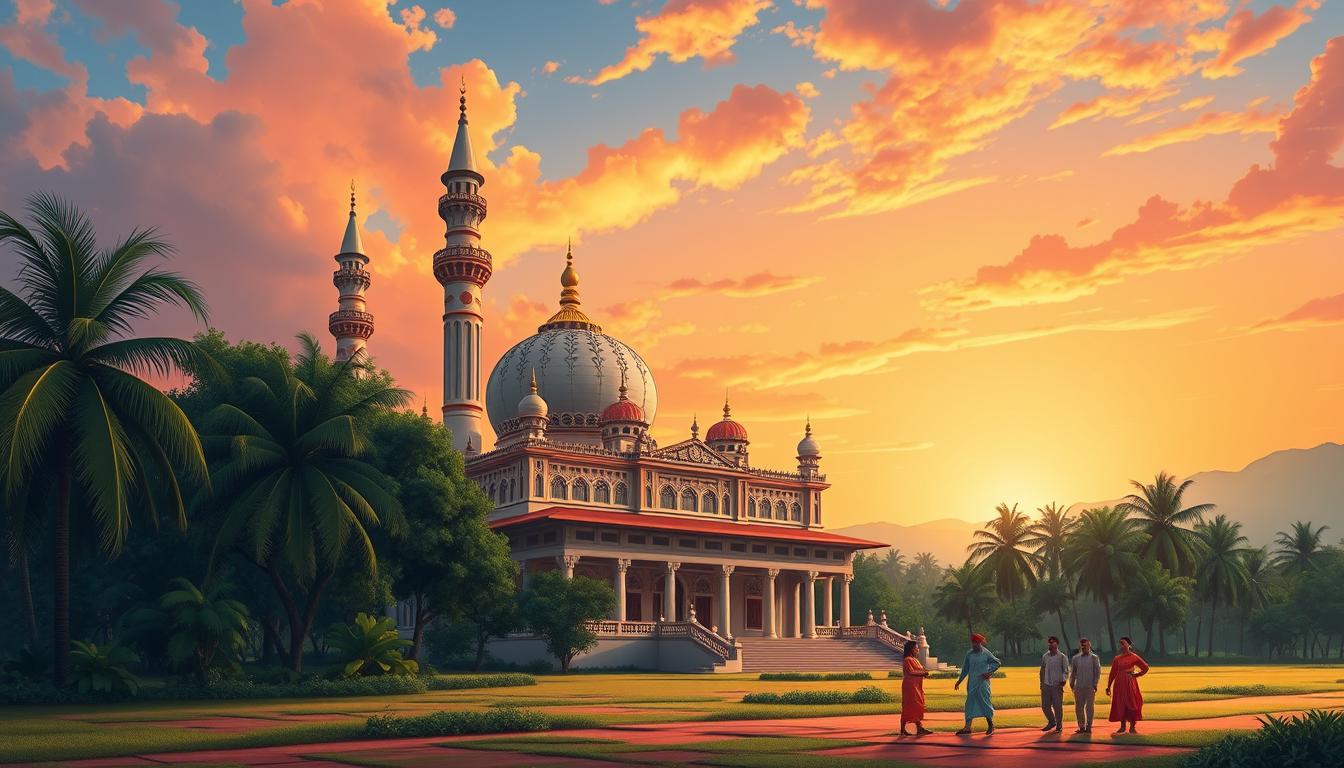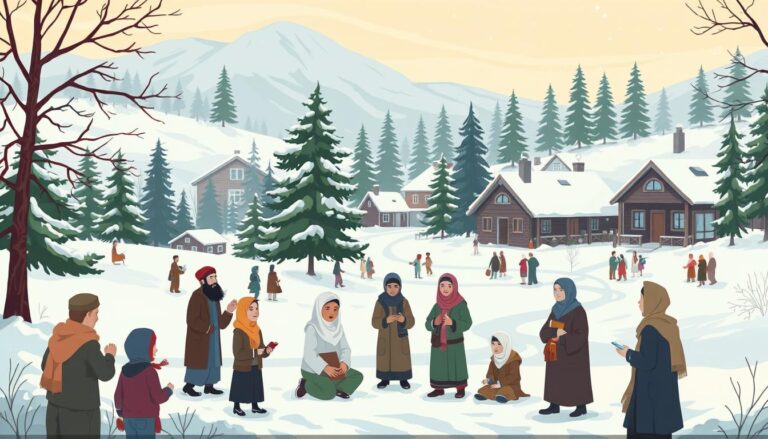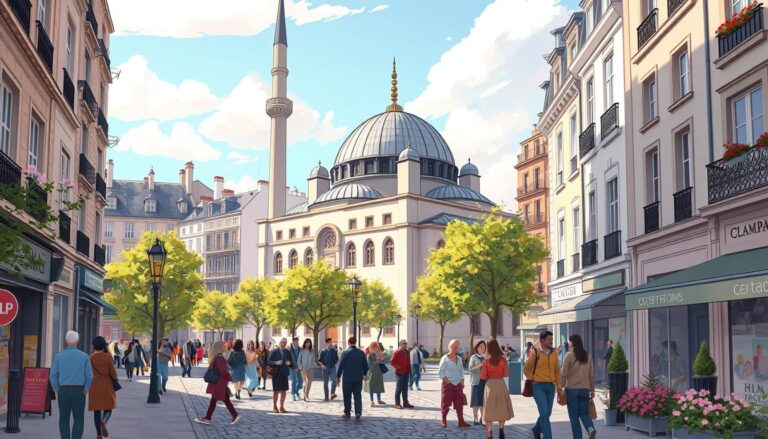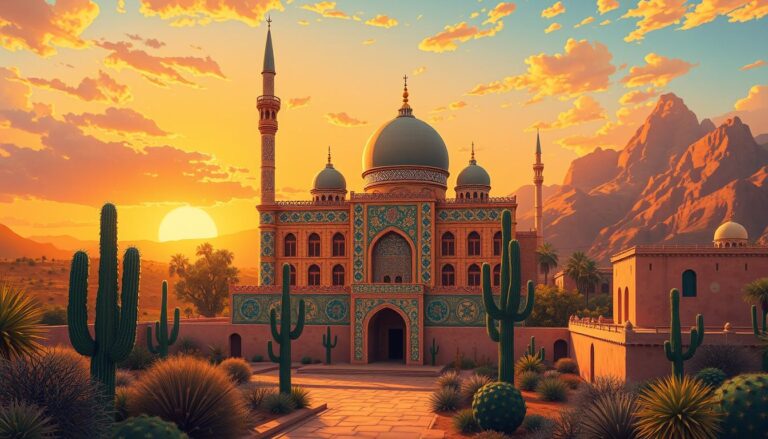Islam in Myanmar (Burma)
Less than 2.1% of Myanmar’s population practices Islam, a startling statistic that belies the centuries-old presence of Muslims in this predominantly Buddhist nation. Despite their rich history and contributions, Rohingya Muslims and other Muslim communities in Myanmar have endured systematic persecution, displacement, and human rights violations that have garnered global attention and condemnation.
From the arrival of Arab and Persian traders in the early centuries AD to the waves of Muslim immigrants during the British colonial era, the story of Islam in Myanmar is one of resilience, diversity, and ongoing struggle. This article delves into the complex tapestry of this minority religion, exploring its historical roots, demographic shifts, and the contemporary challenges faced by Myanmar’s Muslim communities.
Key Takeaways
- Islam is a minority religion in Myanmar, practiced by only about 2.1% of the population.
- Muslims have lived in Myanmar since the 11th century AD, with the first documented Muslim presence in the 11th century.
- Rohingya Muslims and other Muslim communities have faced systematic persecution, displacement, and human rights violations in Myanmar.
- The Muslim population in Myanmar increased during British colonial rule due to waves of Indian Muslim immigration.
- The denial of citizenship to Rohingya and other Muslims has resulted in a lack of access to basic services and rights.
Introduction to Islam in Myanmar
Islam has a long and complex history in Myanmar, also known as Burma. The Muslim population in the country is diverse, with the largest concentration found in the northern Rakhine State. Two distinct Muslim groups inhabit this region: the Rohingya, whose language is derived from Bengali, and the Arakanese Muslims, who speak a language closely related to Burmese and claim to have resided in the state for centuries.
Historical Context
Beyond Rakhine, there are other Muslim minority groups throughout Myanmar, many of whom are descendants of migrants from India and Bangladesh. The history of Islam in Myanmar dates back centuries, with Arab and Persian traders establishing coastal settlements and influencing the region’s cultural and religious landscape.
Demographics and Diversity
According to various estimates, Muslims in Myanmar constitute approximately 4-13% of the total population. The official census places the Muslim population at just 3.8%, while the US Central Intelligence Agency (CIA) estimates it to be around 4%. The Myanmar Muslim community itself estimates their population to be around eight million.
The Rohingya Muslims, numbering around one million, represent the largest Muslim group in the country. Beyond the Rohingya, there are other significant Muslim populations in Yangon and Mandalay regions, as well as the Kaman ethnic group, which is officially recognized as a Muslim community among the 135 ethnic nationalities in Myanmar.
“The Muslim population in Myanmar is diverse, with the largest concentration in the north of Rakhine State.”
Early Muslim Settlements and Trade
Myanmar’s coastal regions have a rich history of early Muslim settlements and trade. As early as the 9th century, Muslim merchants and traders began arriving in Myanmar, establishing settlements along the Ayeyarwady River delta, the Tanintharyi coast, and in Rakhine.
Arab and Persian Traders
Arab and Persian traders sailed from Madagascar to China, often passing through Myanmar. These traders established thriving communities, with the port city of Wesali in Rakhine being a notable trade hub, receiving up to a thousand ships annually in the 8th century AD. The presence of these early Muslim settlers is well-documented by Arab, Persian, European, and Chinese travelers of the time.
Coastal Settlements and Influence
Over the centuries, the Muslim population in Myanmar’s coastal regions grew through intermarriage with local ethnic groups. The early Muslim settlements in Myanmar had a significant influence on Myanmar’s coastal regions, with Arab and Persian traders playing a crucial role in shaping the region’s cultural and economic landscape.
“The Kingdom of Arakan was founded in the year 2666 B.C., and its capital, Wesali, was a noted trade port receiving up to a thousand ships annually in the 8th century A.D.”
Islam During Burmese Kingdoms
Throughout Myanmar’s history, Muslim populations have faced restrictions and persecution from Burmese kings. In 1559, King Bayinnaung banned Islamic ritual slaughter, and King Alaungpaya prohibited the Islamic method of cattle slaughter. In the early 19th century, King Bodawpaya arrested and killed four prominent Muslim imams.
However, some Muslims also held positions of influence, serving as advisors, administrators, and traditional medicine men in Burmese kingdoms. The Muslim population in Myanmar is estimated to constitute at least 4% of the total population, possibly reaching twice that figure.
Restrictions and Persecutions
Throughout Myanmar’s history, Muslim populations have faced restrictions and persecution from Burmese kings. King Bayinnaung banned Islamic ritual slaughter in 1559, and King Alaungpaya prohibited the Islamic method of cattle slaughter. King Bodawpaya arrested and killed four prominent Muslim imams in the early 19th century, further limiting the practice of Islam during Burmese rule.
Muslim Roles in Kingdoms
Despite the persecution, some Muslims held positions of influence in Burmese kingdoms. They served as advisors, administrators, and traditional medicine men, playing important roles in the administration and culture of the kingdoms. The Muslim population in Myanmar is estimated to constitute at least 4% of the total population, possibly reaching twice that figure.
“Myanmar’s Muslim population is estimated to constitute at least 4% of the total population, possibly reaching twice that figure.”
British Colonial Period
During the British colonial rule of Burma, which lasted from 1824 to 1948, the Muslim population in the region experienced a significant increase due to new waves of Indian Muslim immigration. This influx of “Indian” Muslims, collectively referred to as “kala”, led to growing tensions between the native Burmese and the newcomers.
Muslim Immigration and Settlements
The British colonial administration encouraged Indian Muslim migration to Burma, primarily to work in various sectors such as trade, commerce, and government. This resulted in the establishment of Muslim communities across the country, particularly in urban centers like Yangon (formerly Rangoon).
However, the presence of these Muslim immigrants in British Burma was not without its challenges. Anti-Indian and anti-Muslim sentiment rose among the Burmese population, culminating in violent riots in 1930 and 1938 that targeted Muslim properties and resulted in hundreds of deaths.
“Over the last ten years, there have been numerous reports of mosques being destroyed, with some replaced by Buddhist stupas.”
The influx of Muslim immigration to Myanmar during colonial period had a significant impact on the country’s demographic and cultural landscape, though it also led to increased tensions and discrimination against the Muslim communities.
Post-Independence Challenges
The status of Muslims, particularly the Rohingya, in Myanmar has steadily declined since the country’s independence in 1948. The 1974 constitution and 1982 Citizenship Act failed to officially recognize the Rohingya and many other Muslims, effectively rendering them stateless. This has led to widespread discrimination, with Rohingya facing obstacles in accessing education, healthcare, employment, and even obtaining permits to marry.
Citizenship and Statelessness
The 1982 Citizenship Law in Myanmar excluded the Rohingya from recognized national ethnic groups, denying them citizenship and basic rights. As a result, the Rohingya have been left stateless, unable to freely move, work, or access essential services. This has created a humanitarian crisis, with an estimated 3.5 million Rohingya dispersed worldwide, and over 900,000 Rohingya refugees in Bangladesh alone.
Discrimination and Oppression
The military regime in Myanmar has been accused of systematically persecuting the Rohingya and other Muslim communities. Reports indicate widespread human rights abuses, including torture, arbitrary detention, and confiscation of land and property. The Rohingya in Rakhine State, Myanmar’s poorest region, face poverty rates as high as 78%, significantly above the national average of 37.5%.
“The Rohingya have been left stateless, unable to freely move, work, or access essential services. This has created a humanitarian crisis, with an estimated 3.5 million Rohingya dispersed worldwide.”
Islam in Myanmar (Burma)
Islam is a minority religion in Myanmar, practiced by around 2.1% of the population. The Muslim population in Myanmar is diverse, with the largest concentration in Rakhine State. There are two main Muslim groups in Rakhine: the Rohingya and the Arakanese Muslims. Beyond Rakhine, there are other distinct Muslim minority communities throughout Myanmar, many of whom are descendants of migrants from India and Bangladesh.
According to the 2014 census, there were 1,147,495 Muslims in Myanmar, making up 2.3% of the enumerated population of 50,279,900. However, this figure excludes 1,090,000 Muslims in Rakhine State who refused to be identified as “Bengali.” If they were included, the Muslim population would have been 4.3% of the overall population.
The Kaman ethnic group, the only officially recognized Muslim group among the 135 ethnic nationalities, is estimated to be around 45,000 in number. Significant Muslim populations can also be found in Yangon Region (4.7%), Mandalay Region (3%), and Mon State (5.8%).
“President U Thein Sein commended the residents of Mandalay for their unity across different faiths and their efforts to prevent the spread of violence in the city after the 2014 conflict.”
Myanmar has a long history of religious diversity, with many mosques and temples constructed during the Konbaung dynasty kings’ reign from 1853 to 1878. However, communal tensions have escalated in recent years, particularly in Rakhine State, leading to the displacement of at least 123,000 Rohingya Muslims to neighboring Bangladesh.
The Burma Human Rights Network’s report examines the situation of Muslims of different ethnicities across Myanmar, highlighting that at least 21 villages have declared themselves “no-go zones” for Muslims, with the backing of authorities, restricting access for Muslims to these areas.
Despite the challenges faced by Muslim communities in Myanmar, the country’s diverse religious landscape continues to highlight the importance of promoting religious freedom and human rights for all its citizens.
The Rohingya Crisis
The Rohingya, a large Muslim minority group in Rakhine State, Myanmar, have faced severe persecution and violence at the hands of the country’s military and Buddhist nationalists. This Rohingya crisis in Myanmar has resulted in waves of Rohingya refugees fleeing to neighboring Bangladesh, with an estimated 250,000 refugees seeking shelter in Cox’s Bazaar in 1991.
Violence and Displacement
In 2017, hundreds of thousands of Rohingya Muslims fled Myanmar into Bangladesh due to a deadly crackdown by Myanmar’s army, which was later characterized by the United Nations as violence against Rohingya and ethnic cleansing. At least 6,700 Rohingya, including around 730 children under five years old, were reported killed in the month following the violence outbreak in August 2017. Satellite imagery analysis by Human Rights Watch identified that at least 288 villages in northern Rakhine state were partially or totally destroyed by fire after August 2017.
Humanitarian Situation
The Rohingya refugee crisis has resulted in a dire humanitarian situation, with over 730,000 Rohingya fleeing to precarious, flood-prone camps in Bangladesh. Kutupalong, the largest refugee settlement in the world, is home to over 600,000 Rohingya refugees. The camps have faced issues such as malnutrition and poor living conditions, with the 2022 Joint Response Plan for the Rohingya humanitarian crisis receiving only a quarter of its requested US$881 million in funding.
“Amnesty International reported that the Myanmar military had raped and abused Rohingya women and girls.”
Despite an agreement for the return of refugees being reached in early 2018, no Rohingya refugees have returned to Myanmar due to concerns over citizenship rights. The humanitarian situation in the refugee camps has been described as alarming, with issues such as malnutrition and poor living conditions.
Other Muslim Communities
While the Rohingya have garnered significant global attention, there are other distinct Muslim minority groups throughout Myanmar. The Burmese Muslims, who speak the Burmese language and share similar customs to the Rakhine Buddhists, are one such community. The Arakanese Muslims, who also reside in Rakhine State, are another group that does not consider themselves Rohingya, claiming their ancestors have lived in the region for centuries.
Burmese Muslims
Burmese Muslims, also known as Zerbadi, are an ethnic group with a long history in Myanmar. They speak the Burmese language and have adopted many cultural practices of the Bamar ethnic majority. Unlike the Rohingya, the Burmese Muslims are recognized as one of the 135 official ethnic groups in the country, though they still face discrimination and barriers to full citizenship rights.
Arakanese Muslims
The Arakanese Muslims, or Kaman, are another Muslim minority group in Rakhine State. They claim to have lived in the region for centuries and do not identify as Rohingya. However, they have also faced persecution and displacement, alongside the Rohingya population. The Arakanese Muslims constitute a small percentage of the total population in Rakhine, estimated to be around 4% of Myanmar’s overall Muslim population.
“The Burmese Muslims and Arakanese Muslims are often overlooked in the discussion of religious minorities in Myanmar, but they too have a long and complex history in the region.”
Religious Freedom and Human Rights
The denial of basic human rights for Muslims, particularly the Rohingya, has been a major issue in Myanmar. The government’s discriminatory policies have severely restricted the religious activities of Muslim minorities, with the demolition of mosques and religious schools, as well as the appropriation of waqf land and Muslim cemeteries. Travel restrictions have also limited the ability of Muslims to access education, healthcare, and employment opportunities.
According to the latest data, Muslims make up around 4.3% of Myanmar’s population, while Christians account for 6.2%. The 2008 Constitution of Myanmar acknowledges a special status for Buddhism, which is practiced by the majority 88% of the population. This has led to significant differences in perceptions regarding the relationship between religion and citizenship among Buddhist and non-Buddhist residents.
The situation for religious minorities in Myanmar has worsened since the 2021 military coup, raising concerns for further oppression and persecution of groups like the Rohingya. The government’s discriminatory policies, such as the 1982 Citizenship Law and the Religious Conversion Law, have contributed to the denial of basic rights and the creation of statelessness for many Muslims in the country.
“Denying religious freedom is associated with increased conflict, restrictions on rights, hindrances to democracy, and violent extremism.”
The international community has been vocal in its condemnation of the human rights violations against Muslims in Myanmar. The United Nations and various non-governmental organizations have called for immediate action to address the ongoing crisis and restore the fundamental rights of religious minorities in the country.
As the situation in Myanmar remains fragile, it is essential for the government to uphold the principles of religious freedom and human rights, ensuring that all citizens, regardless of their faith, are treated with dignity and equality. The path towards lasting peace and stability in the country will require a concerted effort to address the systemic discrimination and oppression faced by religious minorities like the Rohingya.
International Response and Advocacy
The plight of Myanmar’s Muslim minorities, particularly the Rohingya, has drawn significant international attention and condemnation. The United Nations has described the Rohingya as one of the most persecuted minorities in the world, and various human rights organizations, such as Amnesty International and Human Rights Watch, have documented and condemned the systematic abuses against them.
UN and NGO Efforts
International pressure on the Myanmar government to stop the military crackdown and enable the repatriation of refugees has had some impact, though much work remains to be done to address the complex and long-standing issues. The United Nations and non-governmental organizations (NGOs) have taken various initiatives to address the persecution of Muslims in Myanmar.
- The UN has called for accountability and an end to the international response to Myanmar’s treatment of Muslims, including through the establishment of a fact-finding mission and a UN Security Council resolution.
- Amnesty International and Human Rights Watch have extensively documented and condemned the UN and NGO efforts to address Muslim persecution in Myanmar, advocating for stronger international action.
- Rohingya refugee groups have filed complaints against social media giant Meta (Facebook) for its role in enabling the spread of hate speech and incitement to violence, which contributed to the persecution of the Rohingya community.
Despite these efforts, the situation for Myanmar’s Muslim minorities remains dire, and the international community continues to grapple with the complex humanitarian and human rights crisis unfolding in the country.
Conclusion
Islam has a long and complex history in Myanmar, with the presence of Muslim communities dating back over a millennium. However, the relationship between Muslims and the Buddhist-majority population has been marked by periods of tension, persecution, and discrimination. In the post-independence era, the situation has significantly worsened, particularly for the Rohingya minority, who have faced systemic human rights abuses and the denial of citizenship.
Despite the challenges faced by Muslims in Myanmar, the story of Islam in the country is one of resilience and perseverance. Through centuries of adversity, Muslim populations have maintained their cultural and religious identity, contributing to the rich diversity of the nation. The international community has taken notice of the plight of Myanmar’s Muslims, and advocacy efforts have intensified in recent years, though the path towards true religious freedom and equality remains a difficult one.
As Myanmar continues its political and social transformation, it is crucial that the rights and wellbeing of all its citizens, regardless of their faith, are protected and upheld. Only through a genuine commitment to inclusivity, tolerance, and the rule of law can the country hope to heal the wounds of its past and build a more just and equitable future for all its people, including the long-marginalized Muslim communities.
Source Links
- Islam in Myanmar
- Persecution of Muslims in Myanmar
- Muslims and Rohingya in Myanmar – Minority Rights Group
- Burma Genocide – United States Department of State
- Dictatorship, disorder and decline in Myanmar
- The Burmese Muslims of central Myanmar: No beards, no kurtas
- The advent of Islam in Arakan and the Rohingyas
- Introduction: Islam and the State in Myanmar
- No title found
- Burma’s Muslims: A primer | Lowy Institute
- Crackdown on Burmese Muslims (Human Rights Watch Briefing Paper, July 2002)
- British rule in Burma
- What Forces Are Fueling Myanmar’s Rohingya Crisis?
- Myanmar
- Myanmar’s Muslim Mosaic and the Politics of Belonging
- Persecution of all Muslims in Myanmar ‘on the rise’
- Myanmar Rohingya: What you need to know about the crisis
- Myanmar: No Justice, No Freedom for Rohingya 5 Years On
- Rohingya genocide
- World Directory of Minorities and Indigenous Peoples – Myanmar/Burma : Muslims and Rohingya | Refworld
- Burma
- Burma – United States Department of State
- Myanmar: No Religious Liberty in an Unequal Milieu – Talk About: Law and Religion
- Burma – United States Department of State
- Burma – United States Department of State
- Myanmar: Facebook’s systems promoted violence against Rohingya; Meta owes reparations – new report
- The Impact of Islamophobia on the Persecution of Myanmar’s Rohingya: A Human Rights Perspective – Journal of Human Rights and Social Work
- Easy Target: The Persecution of Muslims in Burma
- “All You Can Do is Pray”







